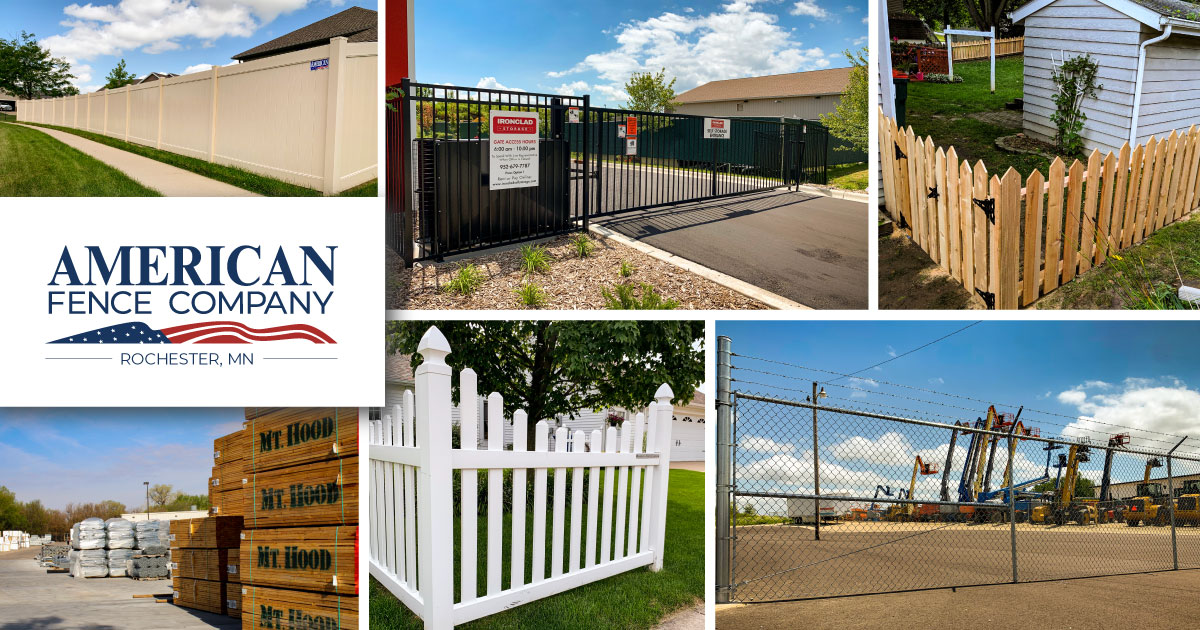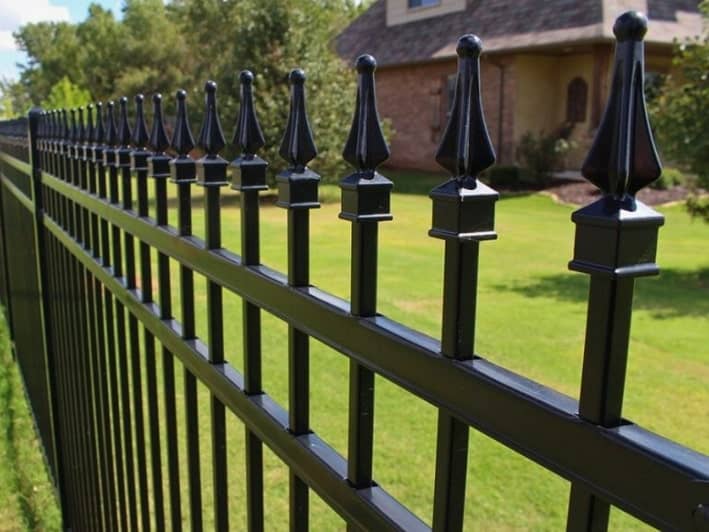How to Select the Perfect Fence Contractor for Your Backyard Project
How to Select the Perfect Fence Contractor for Your Backyard Project
Blog Article
Exactly How to Determine Usual Problems That Need Immediate Fence Repair Work
When it involves maintaining your fence, it is critical to find concerns before they come to be larger problems. Regularly checking for signs of deteriorating timber, leaning panels, or rust can save you time and money in the future. You could not understand exactly how weather and bugs can endanger your fencing's integrity. Let's check out the usual signs that suggest your fencing requires instant attention, so you can keep your home safe and looking its finest.
Indicators of Rotting Wood in Wooden Fences
Have you noticed your wooden fencing looking a bit worse for wear? If so, it could be time to look for indications of rotting wood. Examine the base of the articles and panels for soft spots. If you continue the wood and it feels spongy or crumbles, that's a clear indicator of rot. Next off, try to find discoloration or dark areas on the wood-- these typically signal moisture damage. Focus on any peeling paint or coating, as this can reveal the wood to additional degeneration. In addition, a pungent, stuffy odor can indicate fungal development. Don't neglect to check joints and connections; if they're loosened or crumbling, the timber under is likely jeopardized. By catching these indicators early, you can protect against more substantial damage and maintain your fence standing strong. Normal maintenance is essential to extending the life of your wood fence.
Leaning or Tilting Fence Panels
If you have actually observed your fence panels tilting or leaning, it's important to comprehend what caused it. This concern might suggest underlying structural damages that needs your attention. Allow's discover the typical reasons and the repair work options available to get your fencing back in shape.

Root Causes Of Leaning Panels
When you discover your fencing panels leaning or tilting, it's often an indication of underlying concerns that need dealing with. One usual cause is insufficient water drainage; excessive water can deteriorate the dirt around the fence posts, damaging their support. Another wrongdoer could be strong winds or storms that push against the panels, particularly if they're not properly anchored. In addition, the natural settling of soil over time can create posts to change, leading to a tilt. Parasites, like termites, can jeopardize the stability of wood panels, creating them to lean. Bad installment techniques might result in panels not being safely set, leaving them at risk to leaning under stress. Address these concerns immediately to maintain your fence's honesty.
Signs of Architectural Damages
Noticing leaning or tilting fencing panels can be startling, as these issues usually indicate architectural damages that needs instant interest. When your fence starts to lean, it may signify that the blog posts are moving or that the soil around them has deteriorated. Pay close interest to voids in between panels or messages, as these can also recommend instability. deck builder. Furthermore, look for splits or splintering in the wood, which can deteriorate the overall framework. It could compromise the integrity of the fence if you see corrosion or deterioration on metal elements. Remember, neglecting these indications can lead to much more serious damages down the line, so it's necessary to analyze the situation without delay and do something about it before it worsens
Fixing Options Available

Corrosion and Rust in Steel Fences
If you have a metal fencing, you may observe rust and rust creeping in with time, particularly if it's exposed to moisture. These issues not only affect the look of your fencing however can also compromise its architectural honesty. To recognize corrosion, seek reddish-brown places or spots, which show the steel is oxidizing. Corrosion can spread out quickly if left without treatment, damaging the fence and leading to expensive repairs.To tackle corrosion and rust, you ought to clean the impacted areas with a cable brush and use a rust-inhibiting guide. When the primer dries, think about painting the fencing with a weather-resistant paint to shield it additionally. Normal maintenance, such as checking for signs of corrosion and repairing paint as needed, will certainly assist expand your fencing's lifespan. Resolving these issues immediately guarantees your steel fencing remains strong and aesthetically appealing for years to find.
Cracks and Divides in Plastic Fence

Causes of Plastic Damage
Vinyl fencing is preferred for its longevity, yet it can still deal with fractures and divides due to various variables. One significant reason is severe temperature level variations. When vinyl broadens in the warmth and agreements in the cold, it can weaken the product over time. Additionally, exposure to extreme sunlight can cause UV degradation, making the plastic brittle. Physical influences, like unintended crashes or hefty branches, can also develop cracks. Poor installation or utilizing low-quality materials can worsen these concerns. Age plays a duty; older plastic fencing is extra prone to damages. Regular examinations can aid you recognize these variables before they bring about significant troubles. Take positive procedures to assure your fence stays undamaged and strong.
Fixing Cracks Effectively
Although fractures and divides in your plastic fence can be worrying, resolving them promptly can protect against additional damages and maintain the fence's appearance. Evaluate the dimension of the crack. For tiny splits, a plastic repair service package frequently consists of adhesive that can bond the edges, supplying a smooth fix. Clean the area thoroughly before applying the sticky, guaranteeing it adheres correctly. For bigger splits, you might require to use a plastic patch. Cut the spot to dimension, apply adhesive around the sides, and press it firmly onto the split. Enable it to treat according to the producer's instructions. Normal maintenance and fast fixings can prolong your fencing's lifespan, keeping it looking excellent for years ahead.
Loosened or Missing Out On Fence Blog Posts
Loose or missing fencing posts can weaken the stability of your whole fencing structure. It's crucial to resolve the concern quickly if you notice any posts leaning or wobbling. Check for any signs of motion, as this can bring about additional damage with time. You can conveniently examine the trouble by offering each message a mild shake-- if it really feels unpredictable, it's time to take action.For missing out on messages, you'll need to replace them asap to maintain your fence's integrity. Make sure they're securely anchored in the ground with concrete or gravel for included security when you set up new posts. If a message hangs, tighten it by including additional assistance or driving it deeper into the ground.Ignoring these problems can bring about larger troubles, like spaces in your fence or perhaps total collapse. So, watch on your posts and stay aggressive regarding repairs!
Damage From Climate and Natural Elements
Weather and natural environments can unleash chaos on your fence, resulting in different kinds of damage that need prompt attention. Hefty rainfall can trigger wood to rot, making it weak and unsteady. Snow buildup might flex or break panels, while strong winds can uproot fence messages or cause areas to lean.If you observe splits or splintering in wood fences, it's a sign of drying out due to intense sun exposure. Meanwhile, steel fences can corrosion if safety coatings subside, specifically in damp or coastal areas.Inspect your fence consistently after storms or extreme weather to catch any damage early. Attending to these problems quickly can save you from costly repair work down the line. Don't wait until a little issue becomes a major one; stay proactive and keep your fence leading shape to preserve both capability and aesthetic charm.
Insect Infestation and Termite Damage
When you discover indications of insect problem or termite damages, it's vital to act swiftly to avoid additional devastation. Try to find mud tubes along your fencing or hollow-sounding timber, as these show termites go to job. You could additionally see small holes or frass, which is termite droppings looking like sawdust. If you find any of these indicators, it's time to examine the damage.Don' t delay up until it's far too late; parasites can compromise your fence's integrity. Examine the surrounding area for ants or beetles, as they might be adding to the problem. If you believe an infestation, think about speaking to a parasite control expert to verify and treat the issue.Repairing or changing afflicted areas of your fencing without delay not just restores its toughness however also avoids parasites from spreading even more. Stay vigilant to keep your residential property protected and pest-free.
Regularly Asked Inquiries
Just how Typically Should I Examine My Fence for Damages?
You should check your fence a minimum of twice a year, ideally during springtime and click here fall. Routine checks help you spot damage early, saving you time and money on repairs while preserving your residential property's look and safety and security.
Can I Repair a Fencing Myself or Hire a Specialist?
You can most definitely fix a fencing yourself if you have the right tools and skills. Working with an expert warranties high quality work and saves you time, especially for complex repair services or considerable damages.
What Devices Are Needed for Basic Fencing Repair Services?
For fundamental fence repairs, you'll need devices like a hammer, screwdriver, pliers, a saw, a degree, and measuring tape. deck builder. Relying on the repair service, you might likewise need nails, screws, or substitute boards
Just How Much Does Fencing Repair Work Commonly Price?
Fencing repair service expenses vary commonly, yet you can anticipate to pay between $200 and $1,500 depending on materials, labor, and extent of damage. It's wise to get multiple quotes for the ideal deal.
When Is the very best Time of Year for Fence Services?
The very best time for fence repairs is during moderate climate, normally in spring or early fall. You'll avoid severe temperature levels, making it much easier to function and making sure the materials set properly for lasting durability (deck builder). Observing tilting or leaning fence panels can be disconcerting, as these concerns often indicate architectural damage that requires immediate focus. Loose or absent fence messages can weaken the stability of your entire fencing framework. Snow buildup may bend or break panels, while solid winds can uproot fence messages or create areas to lean.If you notice splits or splintering in wood fencings, it's a sign of drying out due to extreme sunlight exposure. Metal fences can corrosion if protective finishings use off, especially in humid or coastal areas.Inspect your fence frequently after storms or extreme weather to catch any kind of damage early. Fencing repair work costs differ extensively, yet you can anticipate to pay in between $200 and $1,500 depending on materials, labor, and degree of damage
Report this page